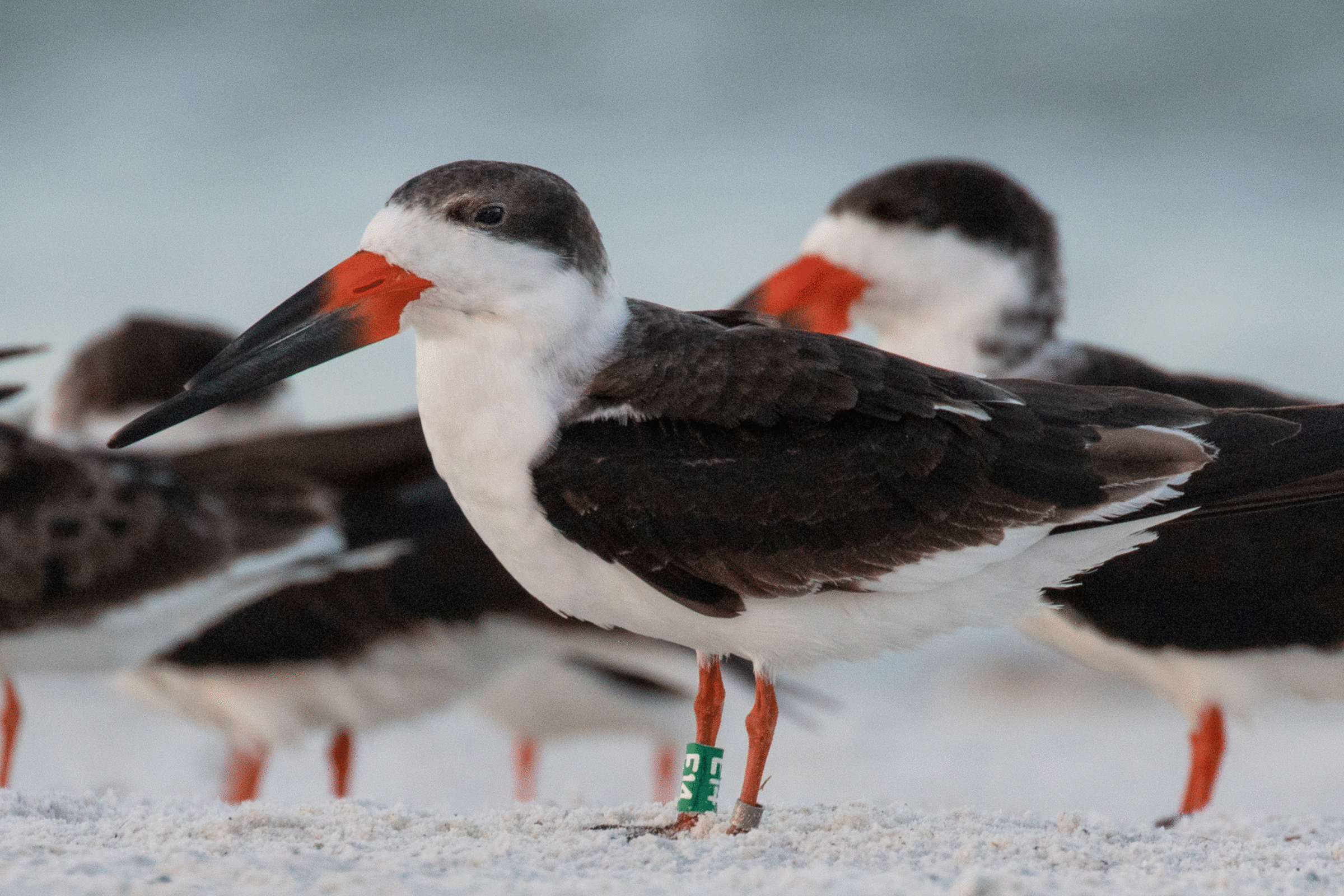*Note: only essential field activities are continuing at Audubon and staff are following CDC guidance and social distancing practices.
Adam DiNuovo readied his spotting scope as he hopped off his skiff one sunny May morning at Caxambas Pass Critical Wildlife Area, which is little more than a slice of sand between mainland Naples and Marco Island. Each spring and summer, he surveys this and other areas weekly for nesting seabirds and planned an uneventful day of recording data on nesting activity.
As Audubon's Lee & Collier Bird Stewardship Project Manager, DiNuovo keeps his distance from the nesting colony as much as possible, relying on his scope to provide the data he needs; he knows how sensitive nesting seabirds can be to any type of disturbance. He wasn’t expecting to actually approach the colony until he spotted a tiny Wilson's Plover chick stuck in vegetation nearby; he probably would not have noticed the tiny bird if it weren’t for a couple of hungry crows closing in on their intended prey, causing a ruckus.
Just moments before they reached their quarry, he jumped into action. He shooed away the crows, grabbed the little fluffball, and snapped a quick photo before returning the young bird safely to its parents and siblings. For this vulnerable shorebird species, every chick counts.
Wilson's Plovers, Snowy Plovers, Least Terns, American Oystercatchers, and Black Skimmers are conservation priorities for the National Audubon Society, the U.S. Fish and Wildlife Service, and other agencies and conservation organizations. Because they nest on local beaches, these species of special concern are extremely vulnerable to development, sea-level rise, and human disturbance.
DiNuovo and his shorebird steward volunteers patrol beach-nesting bird colonies across Southwest Florida all summer in an effort to reduce disturbance by beachgoers that causes adults to fly away from eggs and leave tiny chicks vulnerable to Florida’s hot summer sun. They keep an eye on nesting colonies, provide education about the nesting birds to both locals and visitors, and participate in an exciting study focused on attaching coded leg bands to Black Skimmer chicks.
Until recently, little information was known about the age, survival, and seasonal whereabouts of the skimmers nesting at these sites. In 2015, Audubon Florida – in partnership with Dr. Beth Forys of Eckerd College – began to band skimmer chicks in an ongoing effort to unravel the mysteries of their annual movements. In 2017, DiNuovo began his own, complementary banding program on Marco Island. These banding projects are conducted under proper permits.
He and his team of volunteers capture juvenile Black Skimmers (birds that are nearly full size but still too small to fly), take measurements such as weight and length, and apply a green plastic band to one of their legs before releasing them. Each band is stamped with a unique letter-number code. All skimmers banded in Florida get green bands. As a result of these banding efforts, we now know that skimmer pairs sometimes return in spring to the same beach, and sometimes to the same mate, to breed after spending winter apart. DiNuovo’s team has banded about 200 Black Skimmers since the program began.
According to DiNuovo’s records, 2,000-4,000 Black Skimmers typically winter in Collier County, making it the largest mid-winter flock of Black Skimmers in the southeastern United States. Through a partnership with the local chapter in Collier County, Audubon of the Western Everglades, a winter anchor steward is tasked with monitoring birds during winter migration.
This winter, DiNuovo’s team has resighted banded Black Skimmers from Massachusetts (orange bands), New York (yellow), New Jersey (blue), North Carolina (black), and Florida (green). Tracking these banded birds helps us understand how they move around the country, and the number of states represented underscores the importance of Southwest Florida to the entire eastern population of Black Skimmers.







